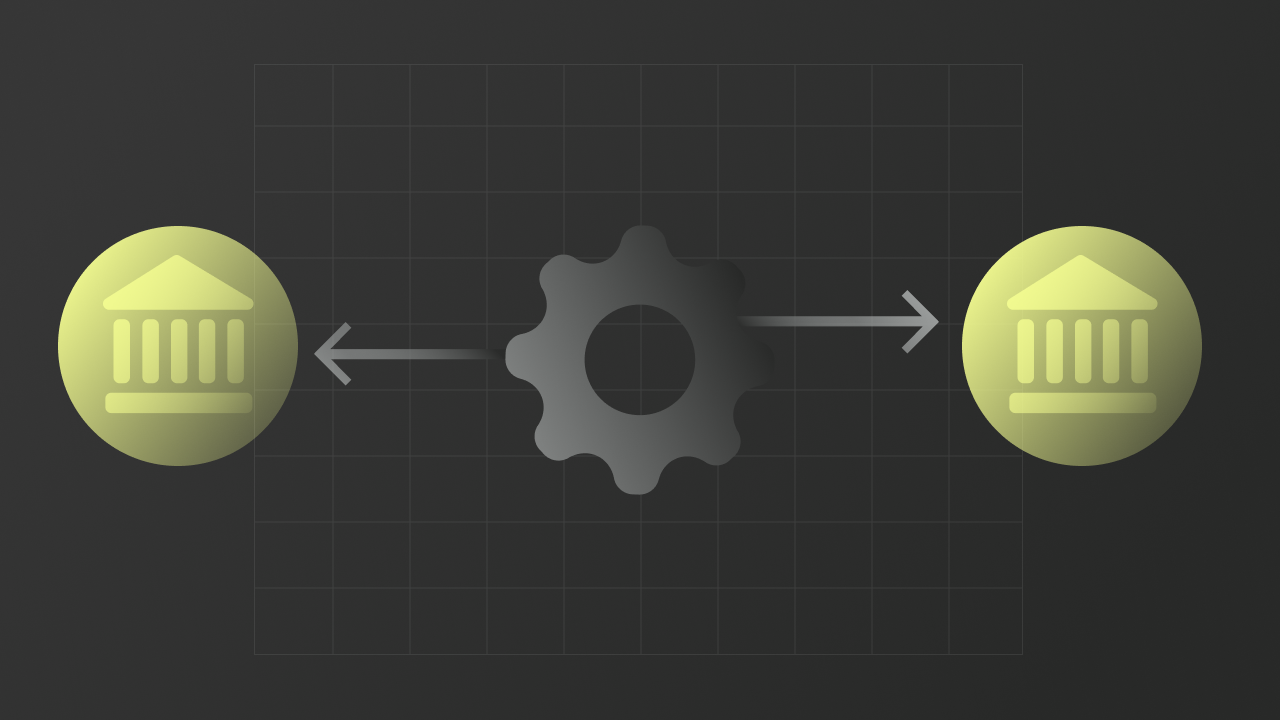
Key Takeaways
The new era of account reconciliation is powered by AI, which brings intelligence and flexibility to the process, moving beyond rigid, rule-based systems.
- What it does: Modern AI platforms can handle unstructured data, perform complex multi-way reconciliations, and intelligently identify and categorize exceptions. When the AI encounters an unfamiliar discrepancy, it can learn from human guidance.
- The business impact: This approach delivers higher match rates, faster closing cycles, and a more resilient reconciliation process.
- The key difference: A shift from rigid rules to intelligent learning.
For finance and technology leaders, the promise of account reconciliation automation has always been alluring: a faster, more accurate financial close, a stronger control environment, and a finance team freed up for strategic analysis. Yet, the reality for most large enterprises has fallen painfully short of this vision. Teams have been given advanced spreadsheets, RPA bots, and niche point solutions, but the core process remains a grueling, manual slog.
The reason for this disconnect is simple. Traditional tools have focused on automating isolated tasks—like downloading a bank statement or formatting a spreadsheet—rather than the entire end-to-end process. They are digital duct tape applied to a fundamentally broken workflow. The real work of reconciliation doesn’t happen in a single spreadsheet; it happens across dozens of systems, from ERPs and sub-ledgers to bank portals and payment gateways.
To truly solve this problem, leaders must move beyond task-based automation and embrace a new, more intelligent approach. The future of account reconciliation automation is not about a better macro; it’s about building autonomous agents that can manage the entire reconciliation lifecycle, from data gathering to final sign-off, with the same judgment and adaptability as a senior accountant.
The Myth of Automated Reconciliation
Most so-called account reconciliation automation solutions have only managed to automate the easiest parts of the process, leaving finance teams to handle the most complex and time-consuming work manually. This creates islands of automation in a sea of manual effort.
The primary challenges in automating account reconciliation processes stem from the tools themselves:
- RPA Bots are Brittle: Robotic Process Automation is based on screen-scraping and mimicking human clicks. When a bank updates its portal or an ERP vendor changes a report format, the bot breaks. This forces IT and finance teams into a constant, costly cycle of break-fix maintenance.
- Point Solutions Create Silos: You might have one tool for bank reconciliations and another for intercompany accounting. These tools don’t talk to each other, forcing teams to manually move data between them and increasing technology sprawl.
- Spreadsheets Lack Control: While powerful, spreadsheets are a black box. There is no clear audit trail for how numbers are manipulated, creating significant compliance risks for any public or regulated company.
These limitations prevent true end-to-end account reconciliation automation and keep the finance function stuck in a reactive, historical-looking posture.
The Anatomy of Manual Reconciliation
To appreciate the need for a new solution, consider a common but complex task: an automated payment reconciliation for an e-commerce business.
A human accountant must:
- Gather Data: Download a settlement report from Stripe or another payment processor, which lists thousands of individual transactions.
- Collect Internal Data: Pull the corresponding bank deposit statements from the bank portal and the sales ledger data from the ERP system.
- Match Transactions: Manually match the lump-sum deposit from the bank to the batch of individual sales in the ERP and the processor’s settlement report, accounting for fees and timing differences.
- Investigate Exceptions: For any discrepancies, they must manually investigate the cause—a customer chargeback, a processing fee change, or a data entry error. This involves digging through multiple systems.
- Create Journal Entries: Finally, they post the necessary journal entries to account for fees, chargebacks, and any other adjusting items.
This entire workflow is a complex, cross-system investigation. You can’t automate reconciliation process work like this with a simple bot. You need a system that can reason.
Agentic AI for Finance
To solve this deeply entrenched operational problem, finance leaders need a new class of technology. Agentic AI platforms represent a fundamental shift in automating account reconciliations. Unlike rigid bots, an agentic AI platform understands and executes business processes from end to end, based on instructions provided in natural language.
This means a senior accountant, without writing a single line of code, can instruct an AI agent to perform a complex reconciliation. They can say, “Every day, reconcile our Stripe settlements to our bank deposits and NetSuite sales ledger. Identify and categorize all processing fees and chargebacks, and prepare the final journal entry for my review.”
The AI agent then uses reasoning to navigate the different applications, interpret the data from various reports, and handle the inevitable exceptions. When it encounters something it doesn’t recognize—a new type of fee, for example—it doesn’t crash. It pauses, flags the exception for a human expert, and learns the correct procedure for the future. This creates a system for automating account reconciliations that is not just automated, but also resilient and self-improving.
Hallucination-Free Reconciliation Automation with Kognitos
Kognitos is the industry’s first neurosymbolic AI platform, purpose-built to deliver this new model for finance. Kognitos is not just another piece of automated account reconciliation software; it’s an enterprise-grade platform that automates your most complex financial workflows using plain English.
The power of Kognitos lies in its unique neurosymbolic architecture. This technology combines the language understanding of modern AI with the precision and logic of classical computer science. For finance, this is a game-changer. It means every calculation and every journal entry the AI prepares is grounded in logic, fully auditable, and completely free from the risk of AI “hallucinations.” This ensures the integrity of your financial data, a non-negotiable for any CFO or controller.
With Kognitos, you can achieve a level of automated account reconciliation previously unimaginable:
- Automate Complex Bank Reconciliations: Teach an agent to perform multi-way reconciliations between payment processors, bank accounts, and your ERP.
- Streamline Intercompany Accounting: Automate the entire intercompany reconciliation process, from matching transactions across entities to generating elimination entries.
- Manage High-Volume Balance Sheet Reconciliations: Deploy agents to handle thousands of balance sheet account reconciliations, complete with supporting documentation and review notes.
The Strategic Benefits of Automated Reconciliation
When you apply this level of intelligent automation, the benefits of automated reconciliation become strategic, not just tactical. You are fundamentally upgrading the capabilities and value of your finance organization.
First and foremost, you achieve a “golden record” for your audit trail. Because every step an AI agent takes is logged and tied back to an English-language instruction, you have a perfect, easy-to-understand audit trail for every reconciliation. This transforms SOX compliance and external audits from a painful fire drill into a routine report.
Second, you empower your most valuable asset: your people. By eliminating the drudgery of manual data ticking and tying, you free your best accountants to focus on strategic analysis, risk management, and business partnering. They shift from being data janitors to being true financial guides for the business. These are the benefits of automated reconciliation that truly matter.
The Future of AI in Account Reconciliation
The journey toward an autonomous finance function is a strategic initiative. The most significant of the future trends: AI in account reconciliation is the move away from the traditional, batch-based month-end close toward a “continuous close.”
With intelligent agents working 24/7 to reconcile transactions as they occur, the concept of a frantic, period-end crunch becomes obsolete. Discrepancies are identified and resolved in near real-time. This provides leadership with a continuously accurate view of the company’s financial position, enabling more agile and informed decision-making. This real-time, autonomous model for account reconciliation automation is the future of the finance function.
Discover the Power of Kognitos
Our clients achieved:
- 97%reduction in manual labor cost
- 10xfaster speed to value
- 99%reduction in human error
Automated Reconciliation is the use of technology to perform the process of comparing two or more sets of financial records to ensure they are in agreement. True automated account reconciliation goes beyond simple task automation to manage the entire end-to-end workflow, including data gathering from multiple systems, intelligent transaction matching, exception management, and the creation of final reports and journal entries.
Implementing a modern account reconciliation automation solution involves:
- Identifying a high-value, complex reconciliation process (e.g., bank, intercompany).
- Documenting the end-to-end process in plain English.
- Using an agentic AI platform like Kognitos to translate that English process into an executable automation.
- Testing the automation and teaching the AI agent how to handle specific exceptions.
- Deploying the agent to run autonomously, with human experts overseeing and handling only the most critical exceptions.
The primary benefits are a drastic reduction in the time and manual effort required for the financial close, leading to increased accuracy and lower costs. Strategically, the benefits include a much stronger internal control environment, a fully auditable and transparent process for compliance (like SOX), and the empowerment of finance professionals to focus on analysis rather than manual data work.
The main challenges include dealing with a multitude of disparate data sources and formats, the high volume of transactions, the complexity of matching rules, and the constant occurrence of exceptions (e.g., timing differences, fees, coding errors). Traditional automation tools like RPA are too brittle to handle this complexity effectively.
Examples of automating account reconciliations with an agentic platform include:
- Performing a daily three-way match between e-commerce platform sales, payment gateway settlements, and bank deposits.
- Automating the entire intercompany reconciliation and elimination process between multiple legal entities.
- Conducting high-volume balance sheet account reconciliations, automatically attaching supporting documents and flagging items for review.
The biggest future trend is the shift from a periodic, batch-based month-end close to a “continuous close.” Intelligent AI agents will work around the clock to reconcile transactions in near real-time. This provides organizations with a continuously accurate view of their financials, enabling more agile decision-making and transforming the role of the finance team into one of continuous analysis and strategic oversight.








